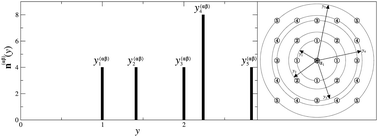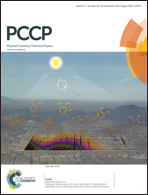A generalized method for the inversion of cohesive energy curves from isotropic and anisotropic lattice expansions
Abstract
Cohesive energy curves contain important information about energetics of atomic interactions in crystalline materials, and these are more often obtained using ab initio methods such as density functional theory. Decomposing these curves into the different interatomic contributions is of great value to evaluate and characterize the energetics of specific types of atom–atom interactions. In this work, we present and discuss a generalized method for the inversion of cohesive energy curves of crystalline materials for pairwise interatomic potentials extraction using detailed geometrical descriptions of the atomic interactions to construct a list of atomic displacements and degeneracies, which is modified using a Gaussian elimination process to isolate the pairwise interactions. The proposed method provides a more general framework for cohesive energy inversions that is robust and accurate for systems well-described by pairwise potential interactions. Results show very good reproduction of cohesive energies with the same or better accuracy than current approaches with the advantage that the method has broader applications.


 Please wait while we load your content...
Please wait while we load your content...